Daily Schedule
8:30–9:00 Drop off and Question of the Day
A teacher is always on the couch near the entrance to welcome students as they walk in the door. Students can participate in the Question of the Day, which is often related to an activity for the day. Sometimes materials accompany the question of the day, prompting discussions.
8:30–10:00 Free Play
There are five tables in the classroom, which are always set up with different activities to help develop children’s skills. Activities vary from day to day, but each table is devoted to developing a certain group of skills.
- Green Table—Focuses on pre-literacy and fine-motor skills. It often includes letter stamps, scissors, glue, tape, or blank books for children to draw and write in.
- Blue Table—Messy arts and crafts activities, including finger paint, watercolors, tempera, glue, glitter and wood. These are open-ended activities that develop children’s creativity and fine-motor skills.
- Yellow Table—Activities related to developing children’s early math skills, including puzzles, pattern blocks, manipulatives, and building materials such as Legos.
- Purple Table—Often has science activities, such as investigating worms from the compost bin, mixing different substances, exploring magnets, or excavating bones.
- Brown Table—A sand table with a lid. Kids can dig for treasure and use a variety of tools to explore the sand. When the lid is on, this table is used for playdough and cooking projects, such as grinding wheat.
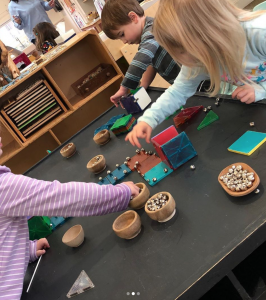
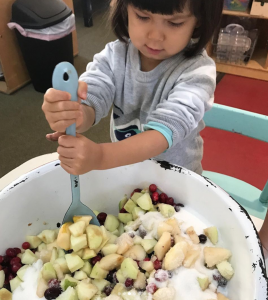
Children can choose from the table activities or explore any of the other areas and materials in the classroom. Activities are guided by the children’s imaginations, and they are free to move from one activity to another whenever they want. Children may choose to use the big blocks to build a ship and plan a voyage, set up a store with various food materials, build an animal home under the big climbing structure, set up a doctor’s office in the cubby room with various supplies, play house in the kitchen area with dolls or friends, read a book with a teacher or parent helper, or engage in any other activity that appeals to them.
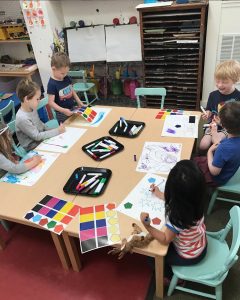
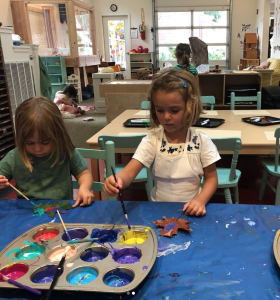
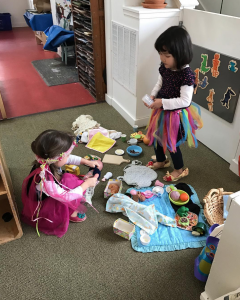
At any point, children can play outside in the wonderful yard with a teacher. During nice weather, the big garage door in the school is open, creating free movement between the indoors and outdoors. In the yard, children can pick carrots from the garden, pluck seeds from sunflowers, dance in the grass, or create imaginary sea voyages on the wooden lobster boat. In the large sandy area, children often dig trenches, rivers, or lakes and fill them with water from the hose, using a variety of tools and materials to experiment with the water. During cold weather, the big door is closed but the outside play continues. Children paint the snow, build igloos, and collect sap from trees to make syrup.
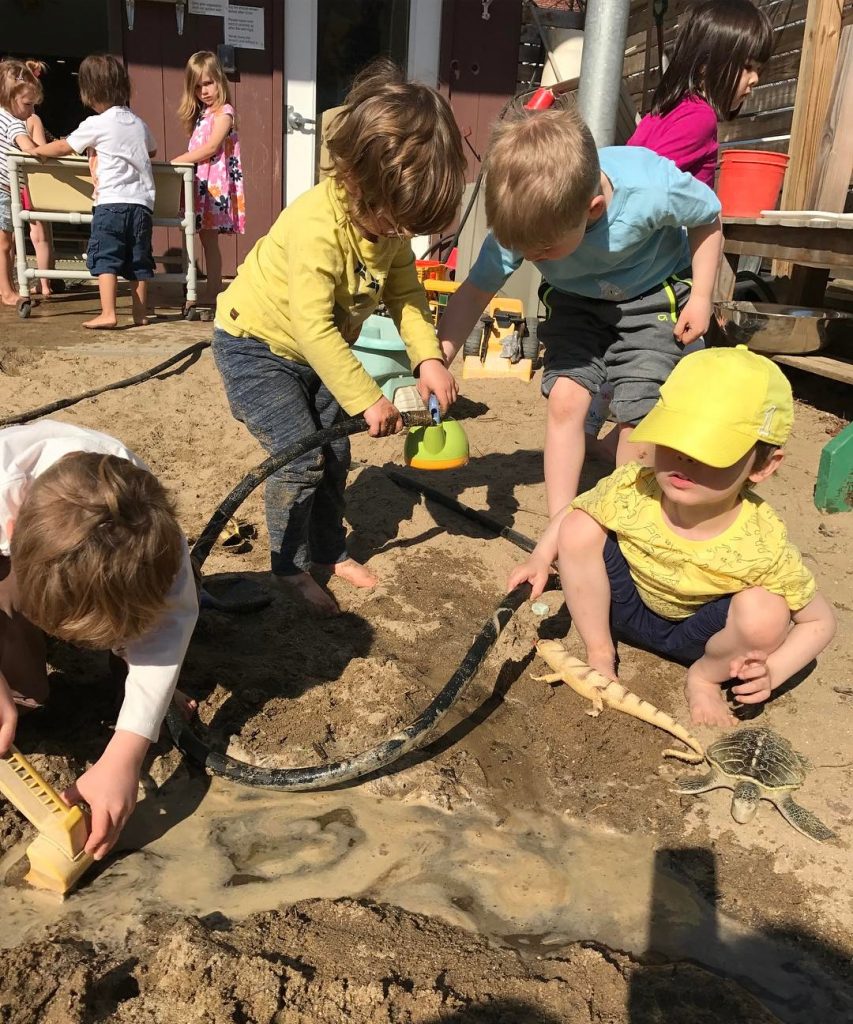
10:00–10:30 Snack
Parent helpers prepare and serve snack. Children find their personal cup, pour water into them and take responsibility for putting their cups away after snack.
10:30–11:40 Free Play
Some new activities are put out on the tables, and children can continue with free play. Teachers may involve groups of kids in putting on a show, having a dance party, or reading aloud. Children are often encouraged to go outside if they spent the first part of the day indoors.
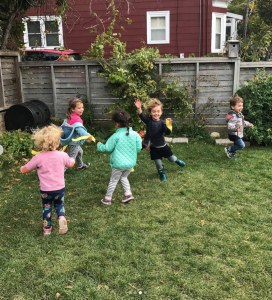
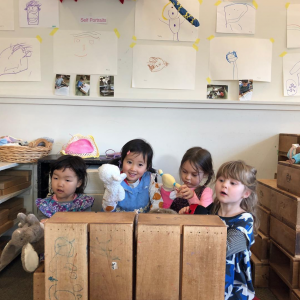
A yoga teacher visits the school on a regular basis during this time to do yoga with any kids who are interested. Local musicians also perform at the school regularly.
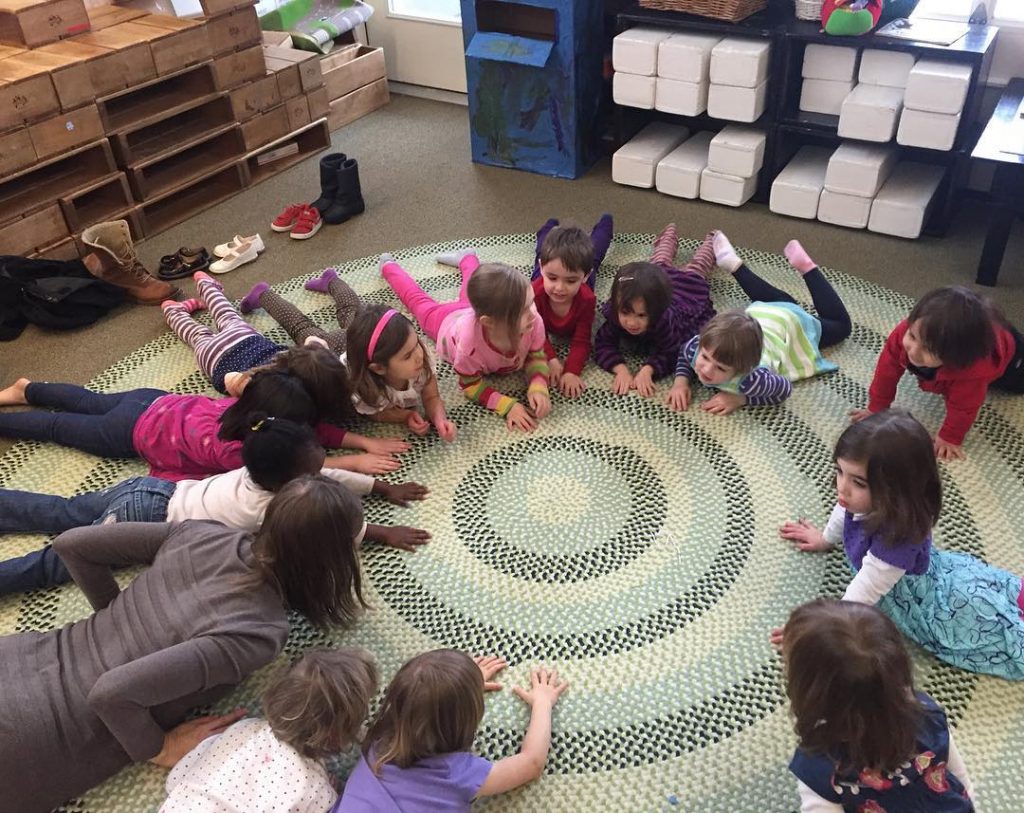
11:40–12:00 Shoe Time and Cleanup
Children get dressed to go home and participate in a cleanup of the classroom. After finishing their cleanup jobs, the children each select a book from the story room and sit in the circle area looking through their book.
12:00–12:10 Circle Time
Teachers sing songs with the children and read books. Books and songs are often related to a theme that is being addressed in the classroom, such as carrots or butterflies. Teachers may also use this time to discuss classroom issues and work on conflict resolution through puppet shows and other creative means.
12:10–12:30 Lunch Time
Children are dismissed from circle to wash their hands and find their lunchbox. Teachers and parent helpers sit with the children for lunch, and other parents often come and have lunch with their child.
12:30–1:00 Dismissal/Outside Play
The school day ends at 12:30, but children are welcome to play in the yard under the supervision of a parent until 1:00.
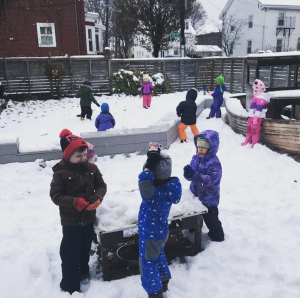
12:30–3:00 Optional Extended-Day Program
One of the classroom teachers at PNS also runs an extended-day program. Parents can sign up in advance or participate on a drop-in basis if space permits. Children have a quiet time and then participate in activities with the teacher.
